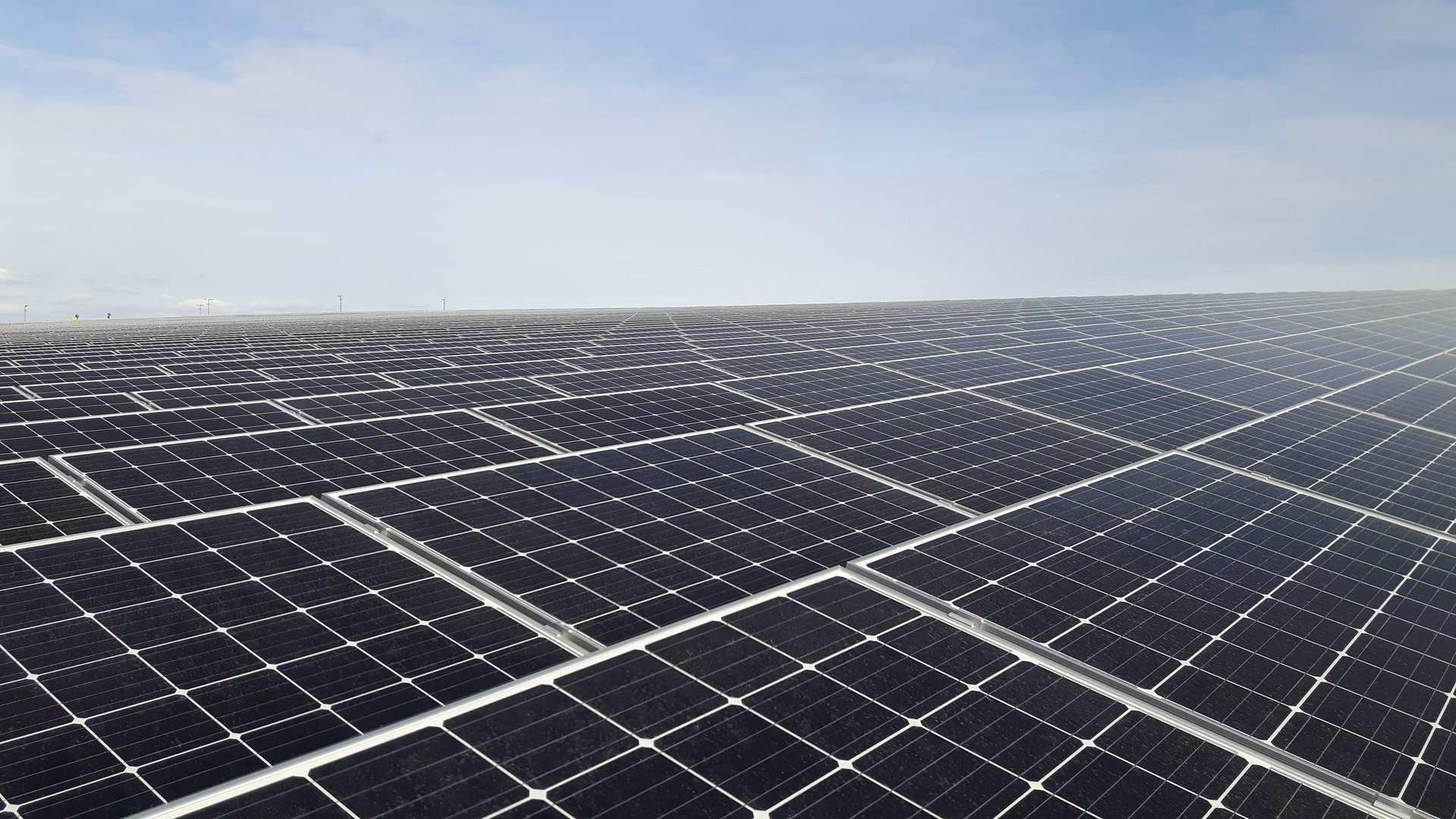
Helen’s renewable electricity capacity is growing — the Lohja solar farm is now operational
The newly completed Lohja solar farm is indicative of significant growth in renewable energy next year. Helen's investments in carbon-neutral electricity production will take concrete form in 2025 as new solar and wind farms are completed. During the coming year, our solar power capacity will increase to more than 200 MW, and our wind power capacity will rise to almost 1 GW. At the same time, the growth of weather-dependent electricity production will require increasing flexibility from the energy system, and Helen will respond to this need by developing electricity storage solutions.
Helen will significantly increase its solar and wind power capacity as coal power is phased out, and the Lohja solar farm is an important part of our clean energy production palette. Located in Lohja's Kirkniemi district, the solar farm comprises a total of 12,400 solar panels and produces renewable electricity with an output of approximately 7 MW.
The demand for clean electricity will increase in the future as electricity-based industries expand.
"Solar power is seeing strong growth in Finland, as the long and bright Finnish summer days are ideal for the production of solar energy. During the winter, production is balanced by wind power. Together, solar and wind power enable investments in electricity-based industries in Finland," says Pekka Tolonen, VP Power Generation at Helen.
Electricity storage solutions provide balance
In 2025, a 5 MW electricity storage facility will be completed at the Lohja solar farm. Helen builds electricity storage facilities to complement zero-emission electricity production. The company also has an industrial-scale 43 MW electricity storage facility under construction in Nurmijärvi. Electricity storage facilities provide much-needed flexibility for the Finnish energy system, help maintain the balance of the electricity network and reduce price volatility.
"Electricity production that varies with sunlight and wind conditions requires increasing flexibility from the electricity system. The electricity storage facility under development at the Lohja solar farm responds to this need. Of course, flexibility in the form of appropriately timed consumption will also be needed from electricity users, both among industrial operators and individual consumers," Tolonen adds.
Helen’s geographically dispersed and diverse electricity production structure provides a stable foundation for sustainable energy production. Investments in the green transition will play a key role in Helen's achievement of carbon-neutral energy production by 2030 and the goal of completely discontinuing combustion by 2040. Clean electricity production also creates the foundation for the electrification of district heating.